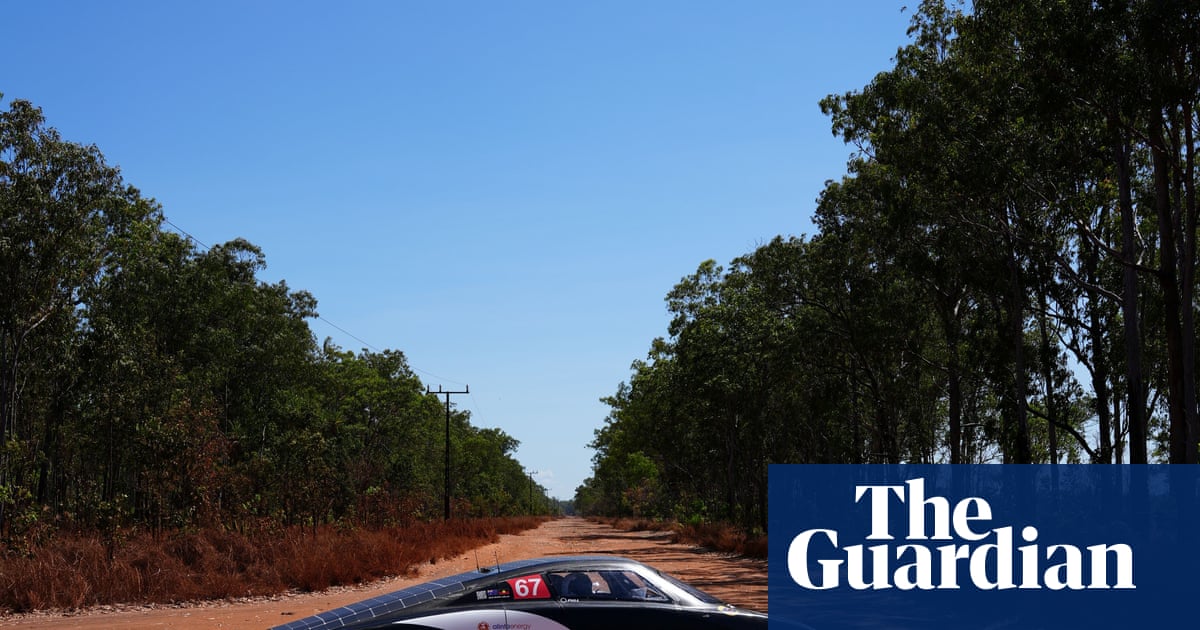Zipping through the Australian outback this weekend is a red car looking more race boat than sedan and which travels at highway speeds using about the same amount of power it takes to boil a kettle.
When and if this futuristic looking craft – the UNLIMITED 6.0 – crosses the finish line for the Bridgestone World Solar Challenge in Adelaide, its team from Western Sydney University will probably celebrate with something a bit stiffer than a cup of tea.
Among the messages of support written on the vehicle’s solar panels for the engineering students trying to develop breakthroughs in solar car design, is one that reads: “get this man a beer”.
No doubt the team will deserve a cold drink after a gruelling 3,000km race from Darwin across some of the world’s harshest and most remote terrain. But it won’t be all blokes who will be celebrating.
Returning for her second race, veteran Micah Honan has taken on the role of electrical lead – one of added significance in 2025 with a new design challenge for the race of ensuring the car runs efficiently with reduced sunlight – this year’s event is being held in winter for the first time.
“There are many solutions for a complicated problem, and everyone solves it a bit differently,” Honan said.
“I love learning how and why something works, or how and why it doesn’t. Engineering is not just a field of study, but a mindset.”
The Western Sydney University team is one of 34 cars from 17 countries preparing to race their sun-powered vehicles across the outback in a test of innovative technology that may drive the solar-powered cars of tomorrow.
The twice-yearly event began in 1987 and attracts an online audience of millions of people, who watch the race of solar-powered cars designed, engineered and built at universities and schools in Australia and overseas.
After the teams leave Darwin they must travel as far as they can until 5pm each day, when they make camp in the desert.
Sign up: au breaking news email
Event ambassador Chris Selwood said designing and building a solar car to travel 3,000km, qualifying for the race, then making it to the start was “an incredible achievement for those with dreams of a more sustainable future”.
after newsletter promotion
“Safety for everyone is paramount and that’s one area that can’t be compromised,” he said in a statement.
Teams face extreme heat, vast open desert stretches and varied terrain in three classes: challenger, cruiser and explorer.
The cruiser class was created to encourage “green to the mainstream” concept cars fitted with innovative, sustainable and potentially practical features that could find their way into real-world design.
Driver-only challenger class cars must travel 3,000km on the power of sunshine, while cruisers carry a passenger and in addition to solar power are allowed to charge from external sources after 5pm each day.
The explorer class provides an even broader platform to showcase prospective ideas, technology and renewables.
Overseas entrants this year include teams from Germany, Sweden, Italy, the Netherlands, Estonia, Hong Kong, Taiwan and the US.
